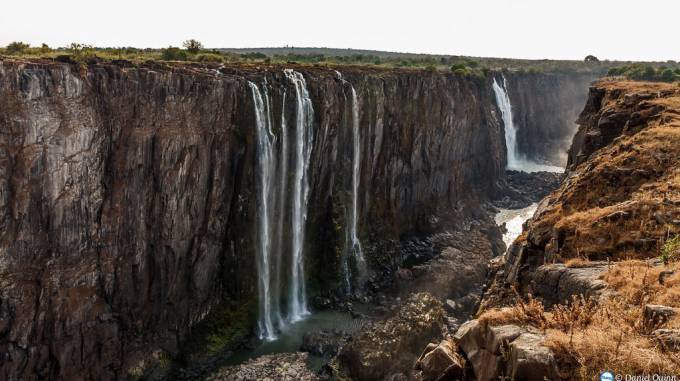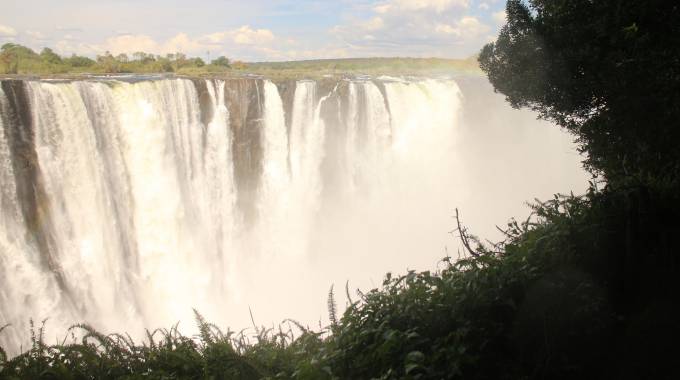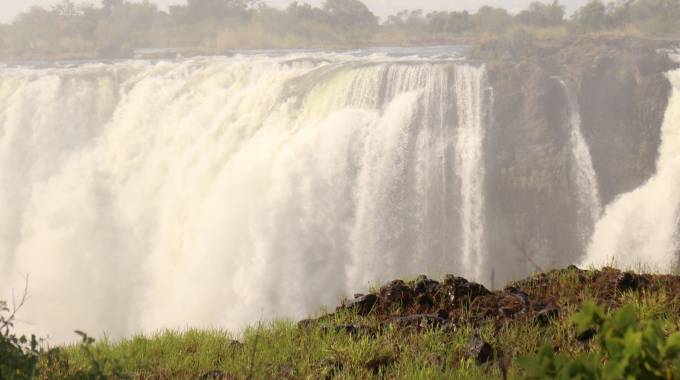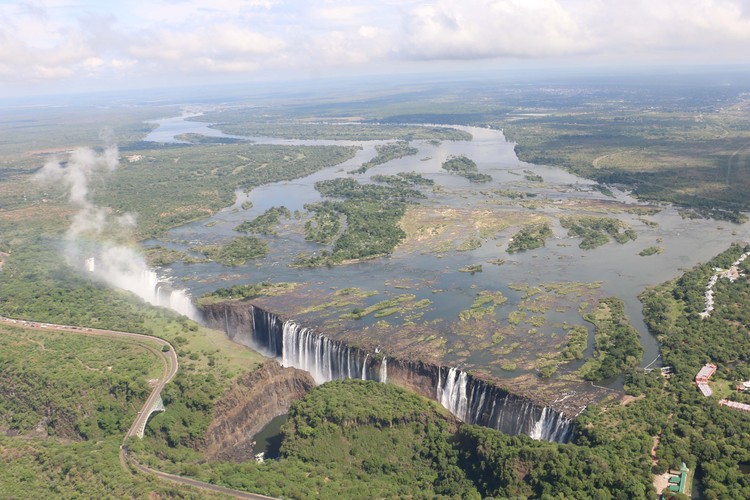
The Sunday Mail

Andrew Moyo
LOCALS call it Mosi-Oa-Tunya (the smoke that thunders) — a befitting name for one of the most magnificent waterfalls on the planet, whose thunderous roar can be heard miles away.
It comes as no surprise that the mighty Victoria Falls, which is located on the Zambezi River at the border between Zimbabwe and Zambia, is among the seven natural wonders of the world.
One can easily run out of superlatives to describe this World Heritage Site, which attracts hundreds of thousands of visitors annually.
But at the beginning of December last year, with the United Nations Climate Change Conference taking centre stage in Spain, some international media outlets decided to use Victoria Falls to fight their climate wars.
Some of the overzealous and sensational reports claimed that because of climate change, Victoria Falls was on the verge of drying up. They captured visuals showing dry segments of the falls. This caused panic on an international scale.

One of the images that circulated showing dry segments of the falls
However, there was actually nothing alarming about the minimal flow. The pictures and videos were captured during the low season, paying attention to segments of the waterfall that normally dry up.
Yet while the local tourist community was furious, citing that the reports were bad for business, the reports actually turned out to be a blessing in disguise.
Tourists, including high-profile celebrities, flocked to the destination, presumably to see the storied falls before they became extinct.
Some of the personalities that visited the falls include Michael Douglas, Catherine Zeta-Jones, Aleksander Ceferin, Maps Mamponyane, DJ Maphorisa, Shekhinah, Sha Sha and Zafari, to mention just a few.

DJ Maphorisa is one of the celebrities who visited Victoria Falls during the festive season
The Sunday Mail Society recently visited the resort on a fact-finding mission so as to get a clearer picture of the dynamics of the falls.
Upon arrival, there was a long queue of people awaiting their turn to pay so as to gain entrance into the park, a clear indication of how popular this site is among tourists.
With the help of a guide, this reporter had an extensive tour of the mighty Victoria Falls, being given blow-by-blow insights into the mystery of the majestic spectacle.

A ZimParks guide gives Andrew Moyo a breakdown of the Vic Falls map
Now, being the middle of the rainy season, the amount of water flowing past the falls has increased significantly over the past few weeks. As opposed to the “dry” images that were circulated at the beginning of December, the current status of the Victoria Falls is simply breathtaking.
While it requires a few more months for the water flow to reach its peak, there are positive signs that these scenic environs are regaining their swagger by the day.
According to data availed by the Zimbabwe Parks and Wildlife Authority (ZimParks), during the high season, usually between February and May, 550 million litres of water flow over the waterfall every minute while just about 70 million litres are recorded in the low season, between November and December.
Apparently, when the “dry falls” gospel was being peddled, the low season was in full swing and with the region having received low rains during the 2018/19 season, the flow was even lower than usual. Hypothetically speaking, the only time that water might stop flowing past these falls completely is when the Zambezi River dries up somewhere upriver or if it changes direction.
Just to be clear, this is the fourth-longest river in Africa, the longest east-flowing river in Africa and the largest flowing into the Indian Ocean from the continent.
Not to mention that the water that flows past Victoria Falls also feeds the world’s biggest man-made dam, Kariba.
A little reading on the Victoria Falls revealed that the source of the Zambezi River lies at about 1 500 metres above sea level in the Mwinilunga District, close to the border where Zambia, Angola and the Congo meet.
By the time the water reaches Victoria Falls, which is the boundary between the upper and middle Zambezi, it would have travelled around 1 200km from the source, about half the distance it has to flow to reach the Indian Ocean.
The theory of the falls drying up simply creates a catastrophic scenario which is best not mentioned.
During the last two weeks of December, the water level is said to have improved dramatically, with the flow expected to be even greater by February.

The power and might of the falls is clearly visible at the Devil’s Cataract on the Zimbabwean side, which is slightly lower than other sections.
A white blanket of water falling over the main falls is also beginning to thicken and there are several sections where one can easily get drenched by the spray and showers characteristic of the area when the flow retains its power.

While many visitors come during its peak, around March, some tourism experts said August is the best time to visit as the flow would still be strong, but visibility would be much better, so one can get a better and clearer view of the falls.
Those who want to take pictures can also get better and clearer shots as opposed to when the water is at full strength, thereby affecting visibility.
Latest tourism figures show that the number of visitors to Victoria Falls continues to grow, with 357 552 people having gone to see the falls in 2019, which is slightly higher number compared to 2018’s 338 472.
Meanwhile, ZimParks has been on a drive to market the country’s resorts not just to foreigners, but also local tourists.
ZimParks spokesperson, Tinashe Farawo, said there are numerous factors that have contributed to the increase in the traffic of tourists visiting the falls.
“The aura of the new dispensation, which has stated that Zimbabwe is open for everyone, has contributed greatly to the increase in the number of visitors,” said Farawo.
“We are pulling out all the stops to make sure that we promote Zimbabwe as a tourist destination and right now we also want to create a belt between Hwange and Victoria Falls so that people who come to see the falls also visit Hwange National Park.
“We are trying our best to promote domestic tourism, which is why our pricing for locals is significantly lower than that of foreign visitors. We are hoping that next year our numbers will increase.”






